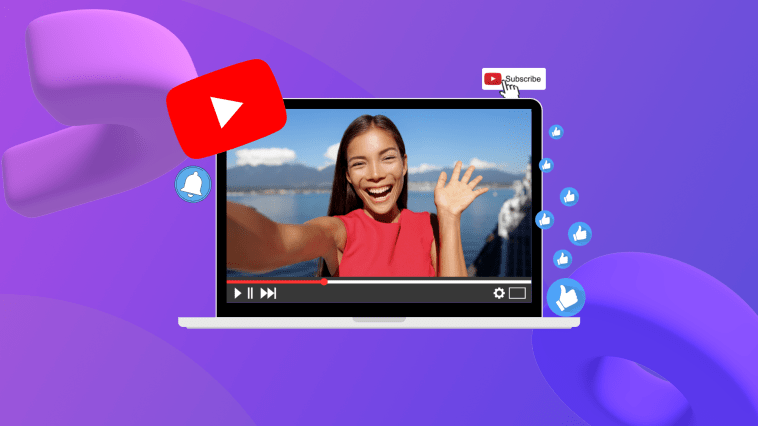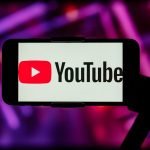Introduction
When people think about making money on YouTube, they usually picture ads popping up before or during videos.
But what if I told you that you don’t need YouTube’s AdSense program to earn a solid income from your channel?
Many creators make more money without relying on ads at all. The best part? You don’t need millions of subscribers or viral videos to get started.
If you’re wondering how to turn your content into cash without waiting to hit the 1,000 subscribers and 4,000 watch hours required for monetization, you’re in the right place.
I’ll break down practical, proven ways to earn money from your YouTube channel that goes beyond ads—methods that work no matter the size of your audience.
How Do I Earn Money from My YouTube Channel Without Monetization?
1. Affiliate Marketing
Affiliate marketing is one of the easiest ways to make money on YouTube. It’s simple: you promote products or services in your videos, and when someone buys through your unique link, you earn a commission.
How it works:
- Sign up for affiliate programs like Amazon Associates, ShareASale, or ClickBank.
- Get your unique affiliate links for products you genuinely like or use.
- Mention or review the products in your videos, then add the links in your video description.
- When viewers click the link and make a purchase, you earn a percentage of the sale.
Why it’s effective:
You don’t need a huge audience—just engaged viewers who trust your recommendations. For example, a tech YouTuber reviewing gadgets can earn affiliate income from every product they showcase.
2. Selling Your Products or Services
If you have a product, service, or skill to offer, YouTube can be a powerful marketing tool. You can sell:
- Physical products: Merchandise, handmade crafts, or print-on-demand items.
- Digital products: E-books, online courses, presets, templates, or digital art.
- Services: Consulting, coaching, freelance work, or personal training sessions.
Example:
A fitness coach might post workout tutorials on YouTube and promote personalized training plans or meal guides. Viewers who find value in the free content are more likely to pay for premium services.
3. Brand Sponsorships and Partnerships
Brands are always looking for influencers to promote their products, and you don’t need millions of followers to land deals.
Many companies prefer micro-influencers (with smaller but highly engaged audiences) because their recommendations often feel more authentic.
How to get started:
- Identify brands that align with your content.
- Create a media kit showcasing your channel’s niche, audience demographics, and engagement stats.
- Reach out directly to brands or sign up for influencer platforms like FameBit (now YouTube BrandConnect), AspireIQ, or Influence.co.
Tip: Even if brands don’t approach you, don’t be afraid to pitch yourself. Show them how your content can help promote their products effectively.
4. Crowdfunding and Membership Platforms
If your audience loves your content, they might be willing to support you financially. Platforms like Patreon, Ko-fi, and Buy Me a Coffee allow creators to receive recurring support from their fans in exchange for exclusive content, shoutouts, or behind-the-scenes access.
Why it works:
People enjoy feeling like they’re part of a community. Offering perks like early access to videos, Q&A sessions, or personalized content can encourage loyal fans to contribute regularly.
5. Licensing Your Content
Do you create viral-worthy videos, stunning footage, or unique clips? Companies, news outlets, or TV shows often pay to license content for their use. Platforms like Jukin Media and ViralHog help creators sell the rights to their videos.
Example:
A breathtaking drone shot, an incredible stunt, or a funny pet video can be licensed for commercials, documentaries, or online articles, earning you passive income long after the video is uploaded.
6. Offering Paid Webinars or Workshops
If you’re an expert in a specific field, consider hosting paid webinars or online workshops. YouTube is the perfect place to promote these events because you already have an audience interested in your niche.
How to do it:
- Choose a topic that solves a problem or teaches a skill your viewers care about.
- Promote the webinar in your YouTube videos.
- Use platforms like Zoom, WebinarJam, or even a private YouTube livestream (with access granted to paying participants).
7. Freelancing Through Your YouTube Skills
Your YouTube channel is a portfolio of your skills. Whether it’s video editing, graphic design, photography, voiceovers, or writing, you can attract clients just by showcasing your talent in your content.
Example:
A video editor could post tutorials breaking down editing techniques. In the video description, they can offer freelance services to viewers who prefer hiring an expert instead of doing it themselves.
8. Driving Traffic to a Blog or Website
If you have a blog or website, you can use YouTube to drive traffic there, where you can monetize through ads, affiliate links, or selling products.
This strategy works well because your YouTube content builds trust, and people are likelier to visit your site for more in-depth information.
How to connect the two:
Create YouTube videos introducing a topic and link to your blog for the full guide. This keeps your audience engaged with your content across platforms.
FAQs
Do I need a large audience to make money on YouTube without monetization?
No, you don’t. What matters more is having an engaged audience that trusts your recommendations. Even channels with a few hundred subscribers can earn income through affiliate marketing, services, or sponsorships.
Can I combine multiple strategies?
Absolutely! Many successful creators use a mix of affiliate marketing, selling products, sponsorships, and crowdfunding to diversify their income streams.
How do I find brands for sponsorships if I’m a small creator?
Look for brands that align with your niche, even small businesses. Reach out directly with a personalized pitch explaining how your content can benefit them. Influencer platforms also connect small creators with brands.
Is affiliate marketing allowed on YouTube?
Yes, but make sure to follow YouTube’s guidelines. Always disclose affiliate links to your audience (e.g., “This video contains affiliate links, and I may earn a commission if you make a purchase”).
Further Resources
Conclusion
Earning money from your YouTube channel without monetization isn’t just possible—it can be even more profitable than relying on ads alone.
The key is to stay authentic, focus on providing value, and build genuine connections with your audience.
Which of these strategies do you think would work best for your YouTube channel?





GIPHY App Key not set. Please check settings